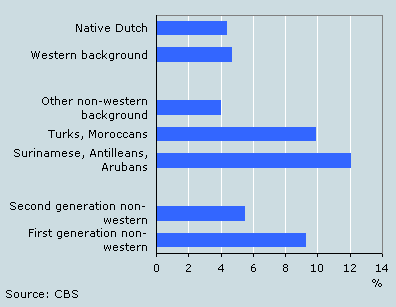4 percent in Dutch population suffer from diabetes mellitus

The proportion of diabetics in the Netherlands increased from nearly 3 percent in 2001/2002 to 4 percent in 2007/2008. Diabetes is relatively frequent in the older population and people with a non-western background. Obesity - a risk factor for diabetes - is more common in the non-western than in the native Dutch population.
Diabetes on the increase
In 2007/2008, 4 percent of Dutch people indicated to suffer from diabetes, an increase by over 1 percentage points relative to the period 2001/2002. The increase is related to the ageing process in the Dutch population and the increase in obesity rates. Diabetes is more common in the older and obese population.
GPs also play a more active role in early diagnosing of diabetes and due to information campaigns more people recognise the symptoms and know they have diabetes. More than one in five take insulin soon after they were diagnosed with diabetes.
Diabetes by age

Diabetes more often occurs in population with non-western background
Diabetes is more frequently found in the population with a non-western background than in the native Dutch population. There are many diabetics among Surinamese/Antilleans/Arubans and Turks/Moroccans. Adjusted for age differences, diabetes is two to three times as often found in these two groups as in the native Dutch population. The group that is monitored solely concerns people over the age of 25, because diabetes is rare in young people.
Diabetes in over-25s (adjusted for age differences), 2001/2008

Diabetes mainly found in first generation
The reason why the disease is unevenly spread over the various non-western ethnic groups is as yet unclear. It is assumed that an abrupt change from the non-industrialised society in their country of origin to a western, industrialised society may play a part in this respect. Diabetes is indeed more commonly found among first-generation people with a non-western background over the age of 25 than among their second-generation counterparts.
Lifestyle factors, such as food and amount of exercise are also important. Severe overweight, for example, is more frequently found in Turks/Moroccans and Surinamese/Antilleans/Arubans than in other ethnic groups.
Severe overweight among over-25s (adjusted for age differences), 2007/2008

Jan-Willem Bruggink